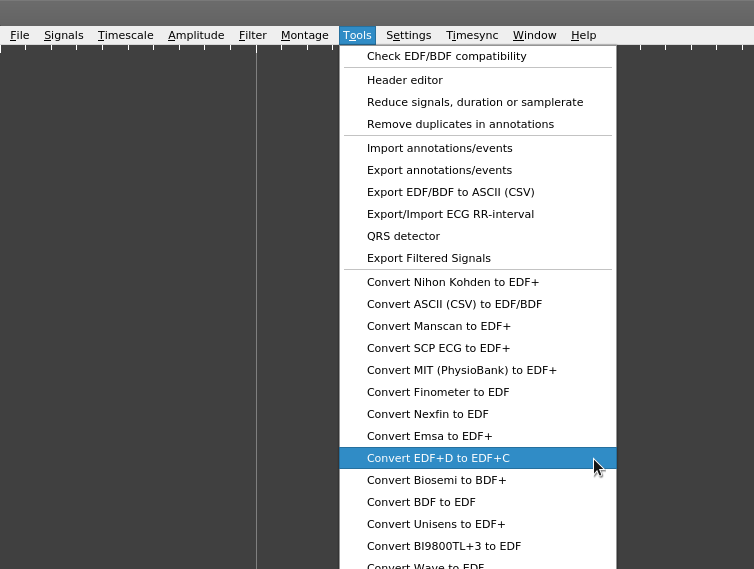Edit this page
Open an issue
Check EDF Type
Detailed EDF format description
for a detailed explanation of the EDF format see the description page
EDF Type Overview¶
Only EDF+ files can be stored in either a continuous (EDF+C) or discontinuous (EDF+D) format, while EDF files can only be continuous. A discontinuity within the EDF+ file would occur when the recording is stopped and subsequently started again, resulting in a lapse in recording time. There are two ways to account for the missing data during the non-recording period:
- Continuous: to keep the timeline in the file continuous, the data record during the non-recording time can be filled with zeros. This would maintain the timeline within the file.
- Discontinuous: ignore the time the recording stopped and "Glue" the different recording sessions together. This creates a jump in the timeline of the EDF+ file.
For most applications, the EDF+ file will need to be in EDF+C format. The majority of softwares and analysis tools require this.
Convert EDF Type¶
You need to ensure all EDF+ files are in continuous format (EDF+C). This is easy to check within data2bids.
- Ensure your input directory has been organized prior to opening within data2bids.
- Within data2bids select the input directory and check the
EDF Typecolumn. You should flag any file that is inEDF+Dformat. -
Once you have identified the files that are in
EDF+Dformat, open EDFBrowser, select Tools at the top and Convert EDF+D to EDF+C.
-
A dialog box will open allowing you to select one of the identified files that is in
EDF+Dformat, select one file. - Once conversion is complete you will notice the original file remains but now there are several smaller files with a 4 digit suffix accounting for the number of times the recording was stopped/started.